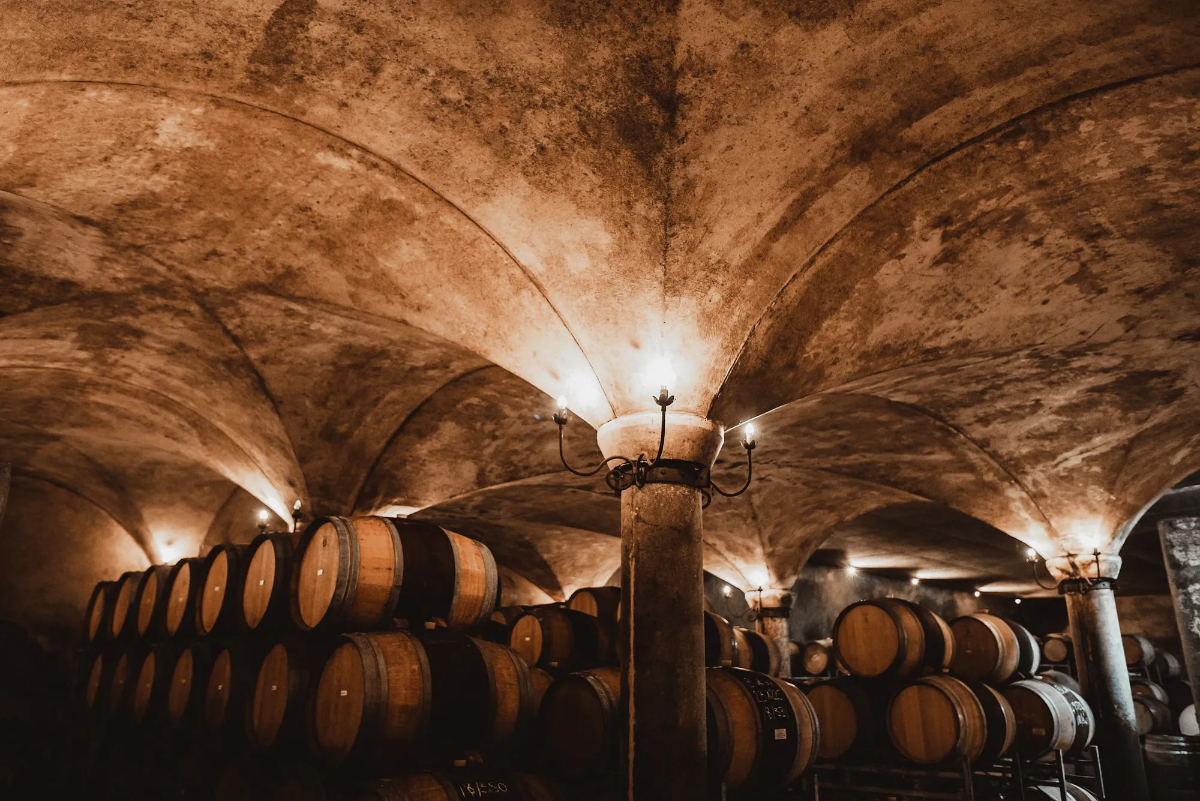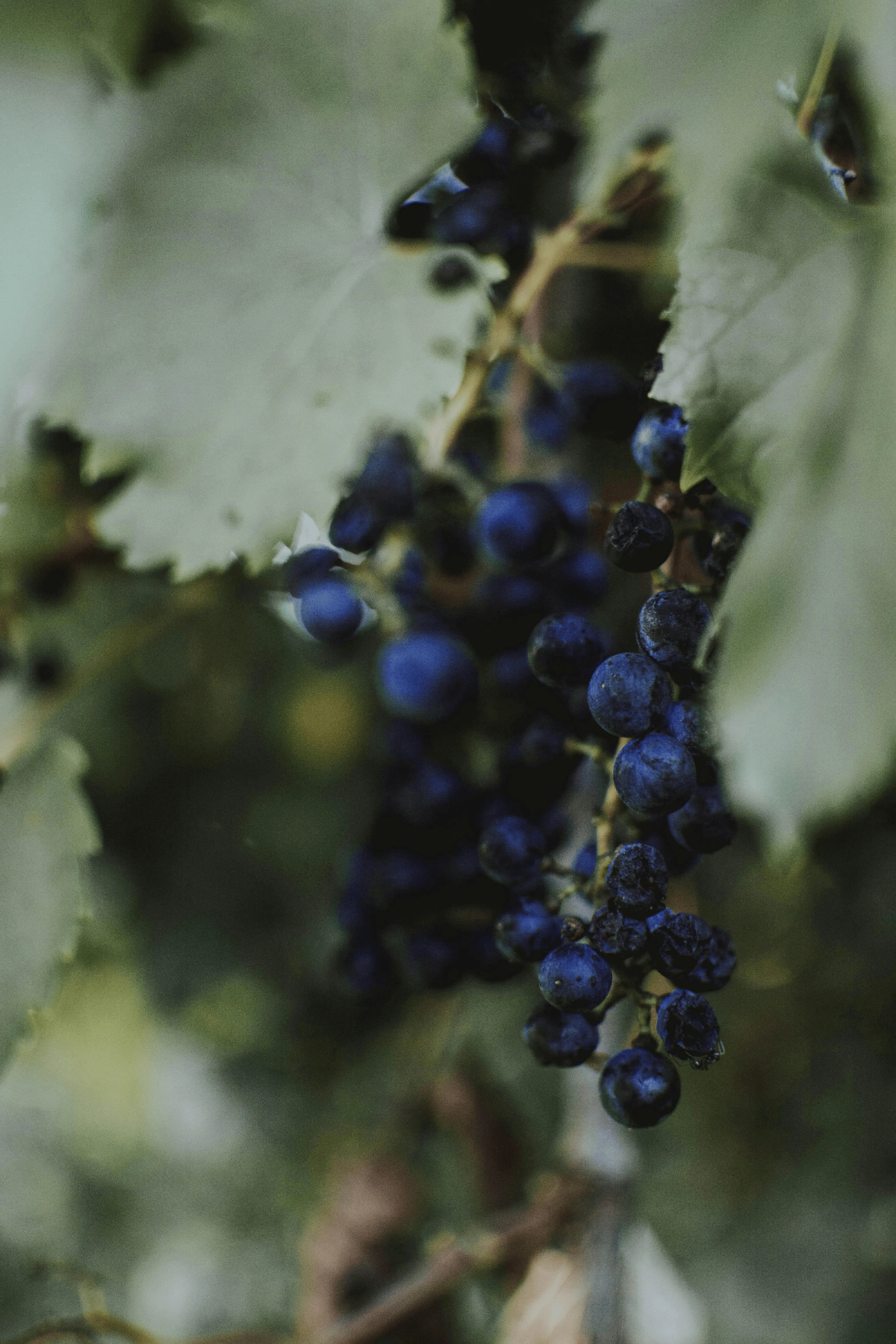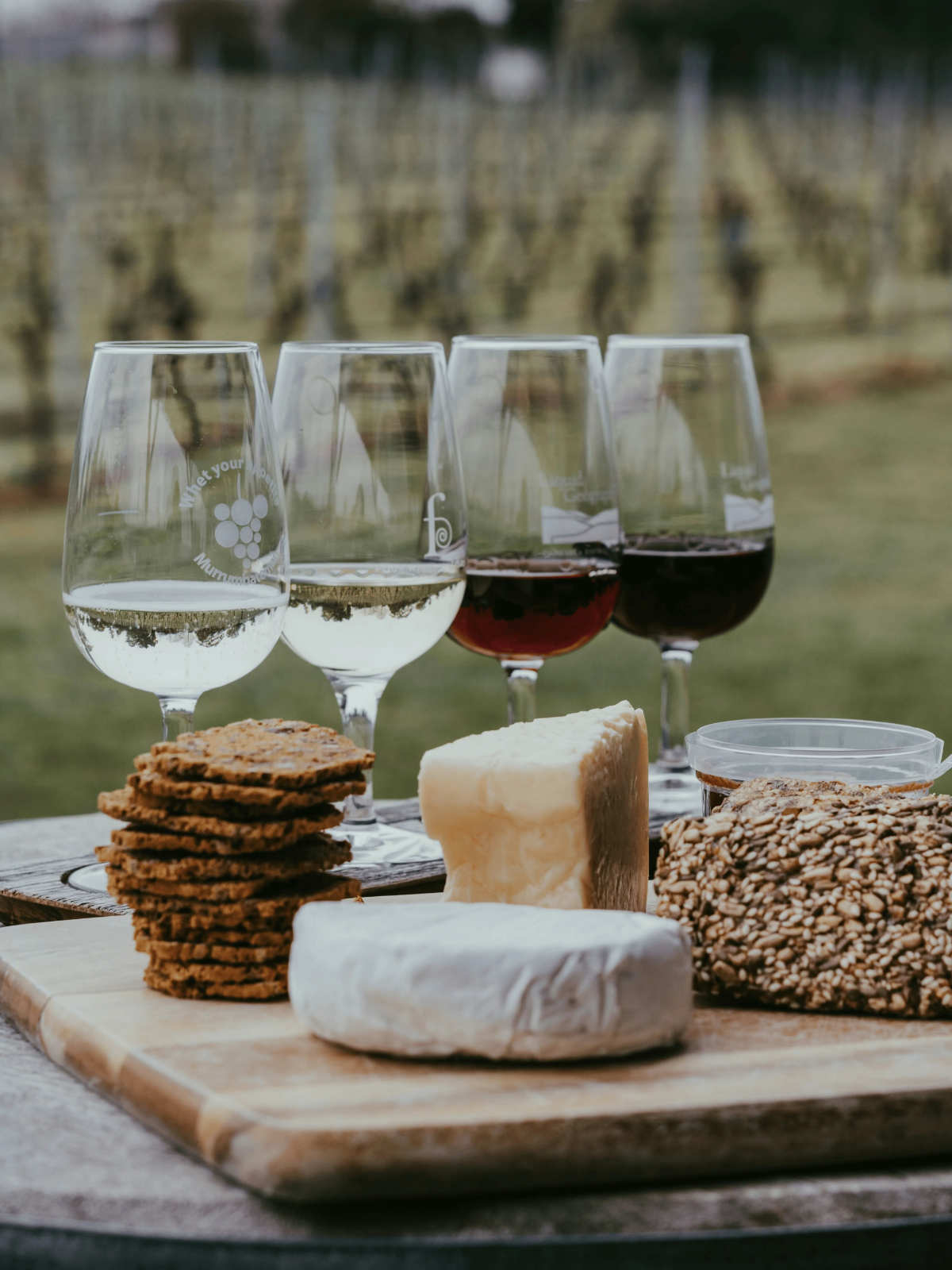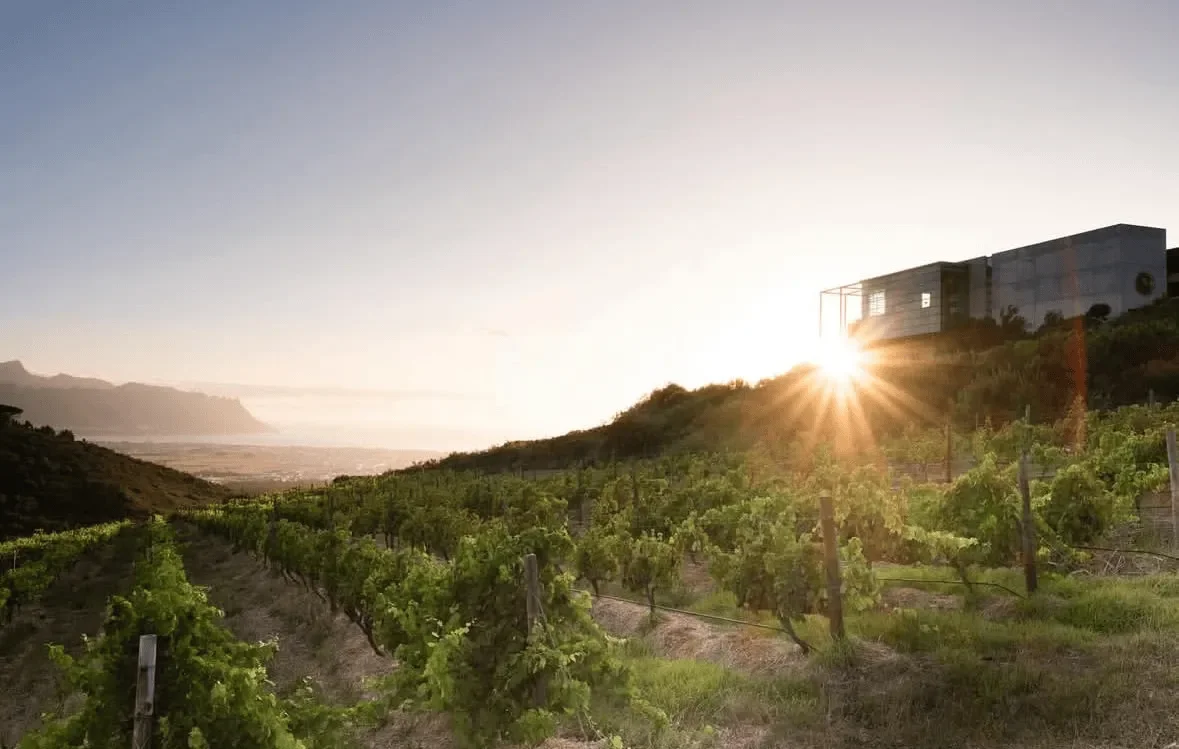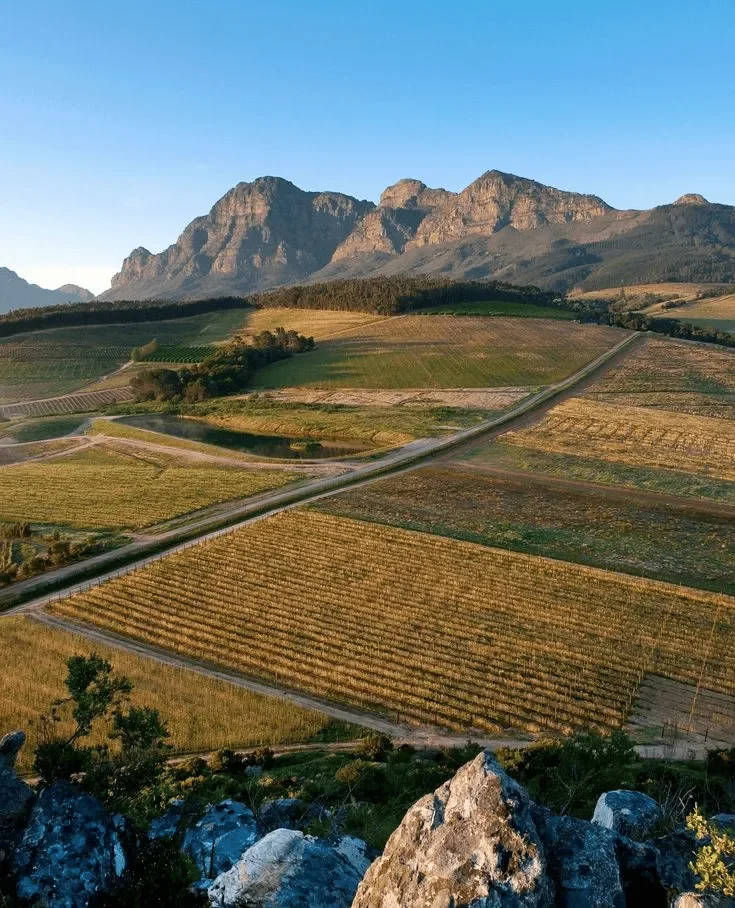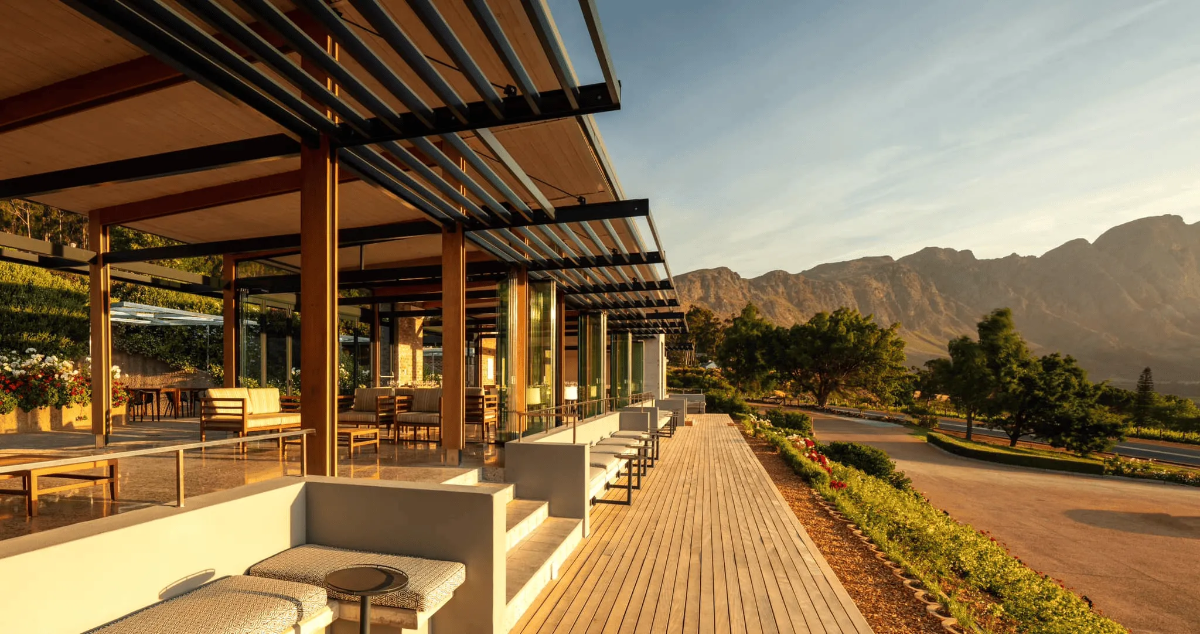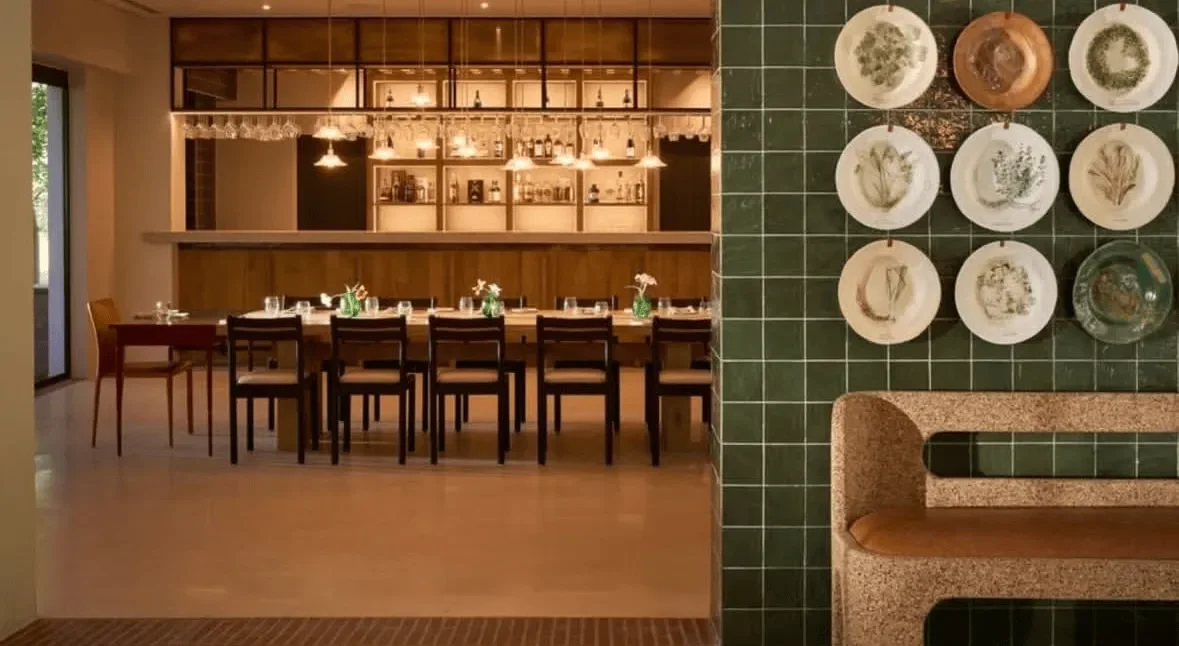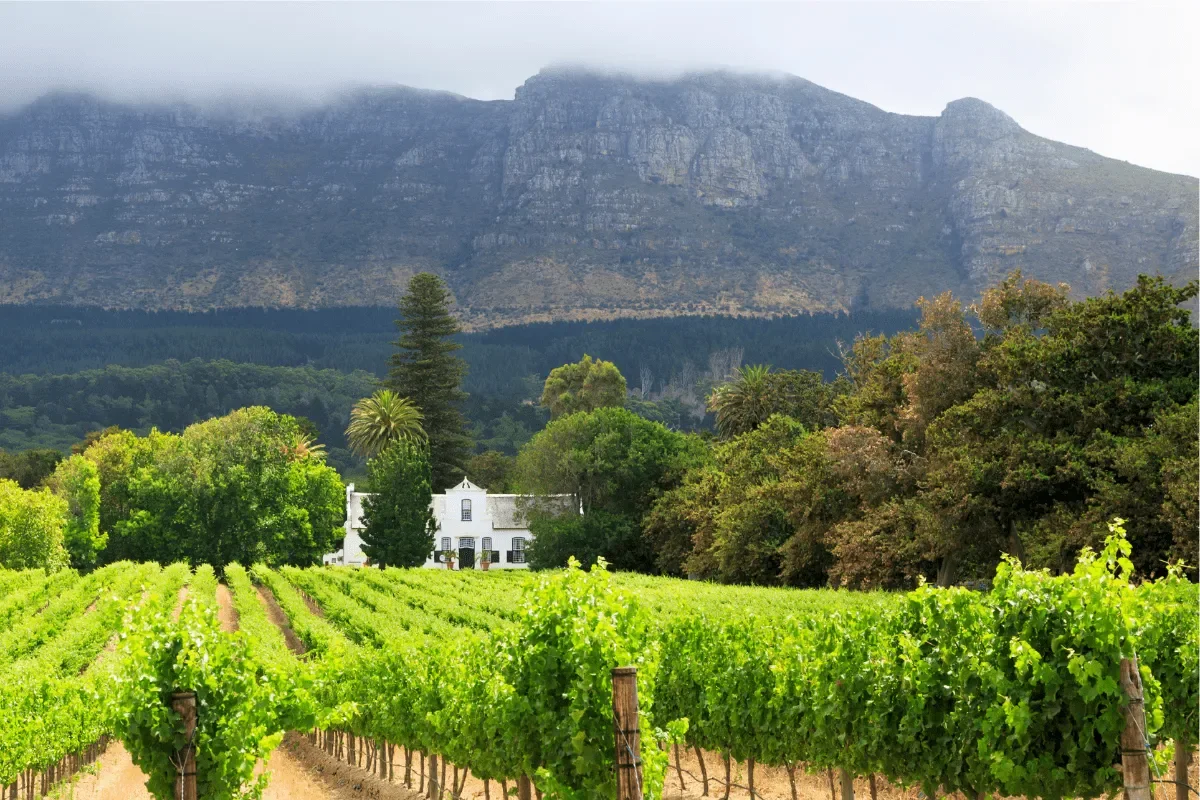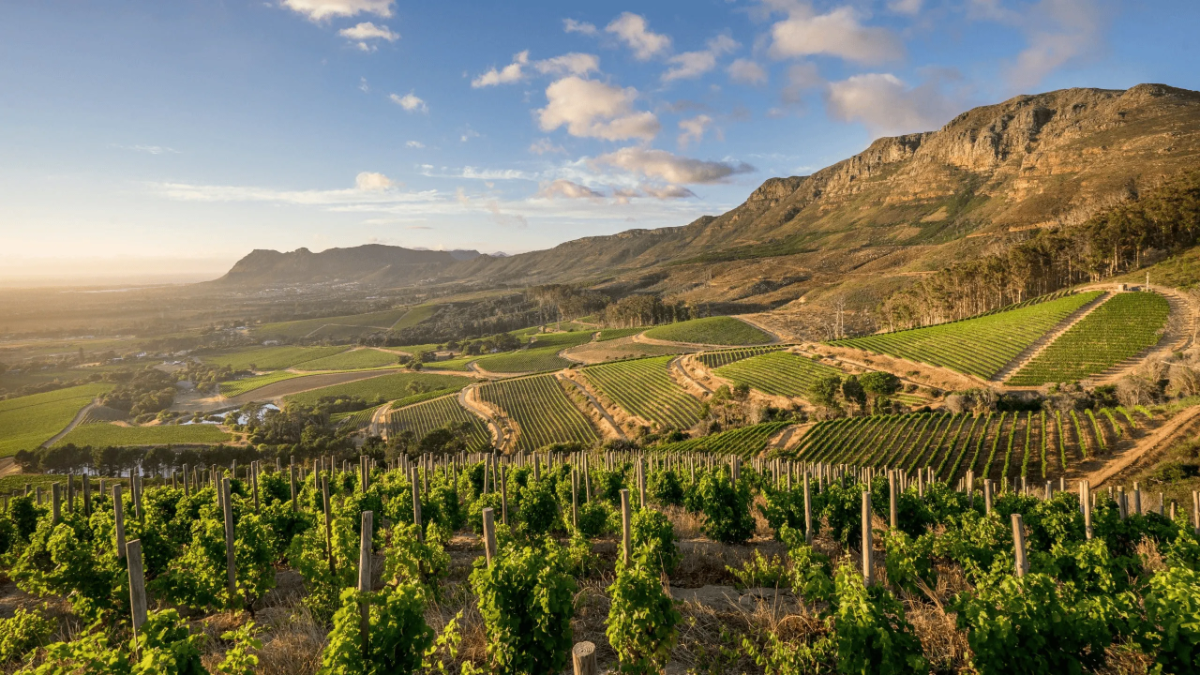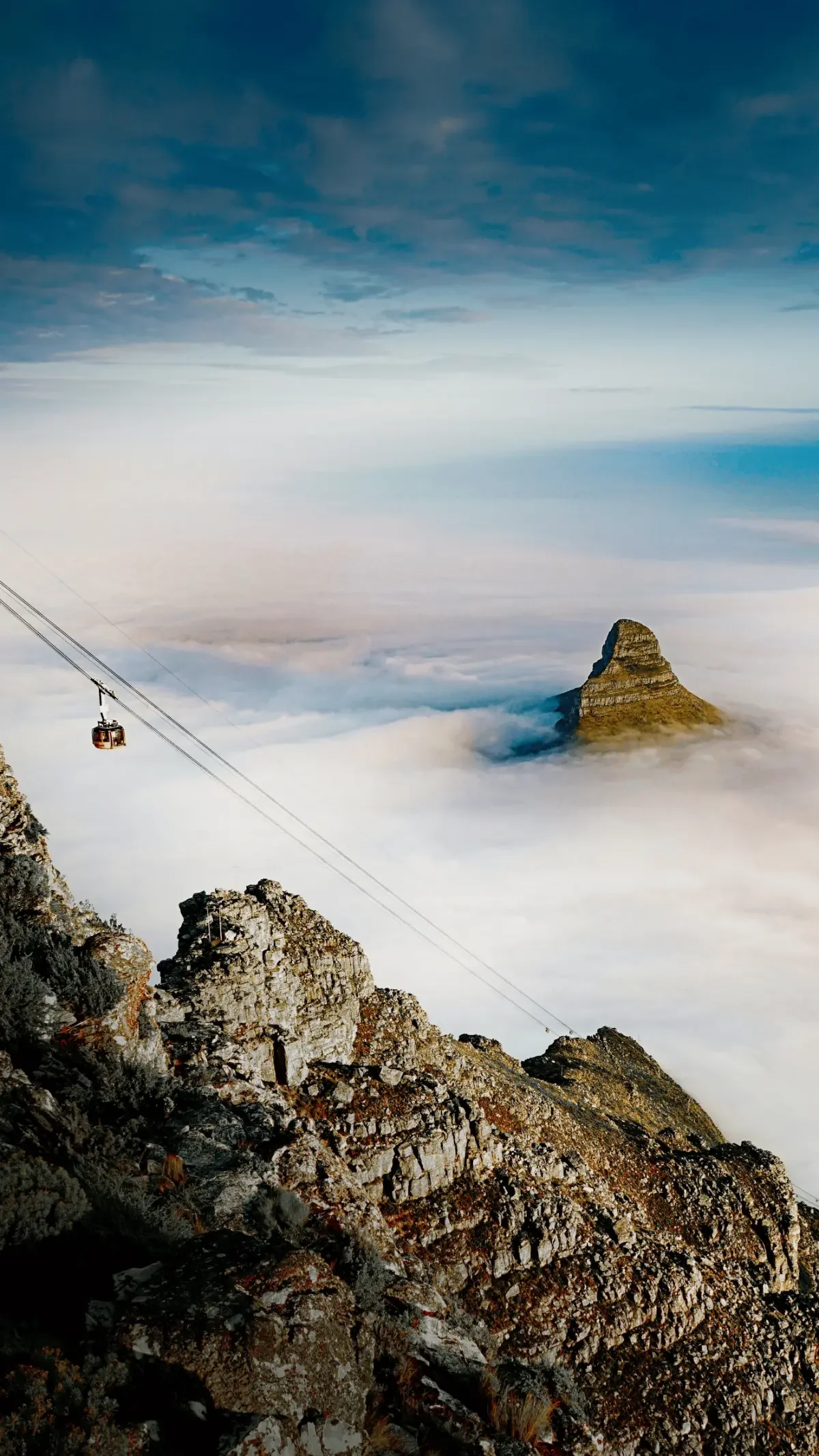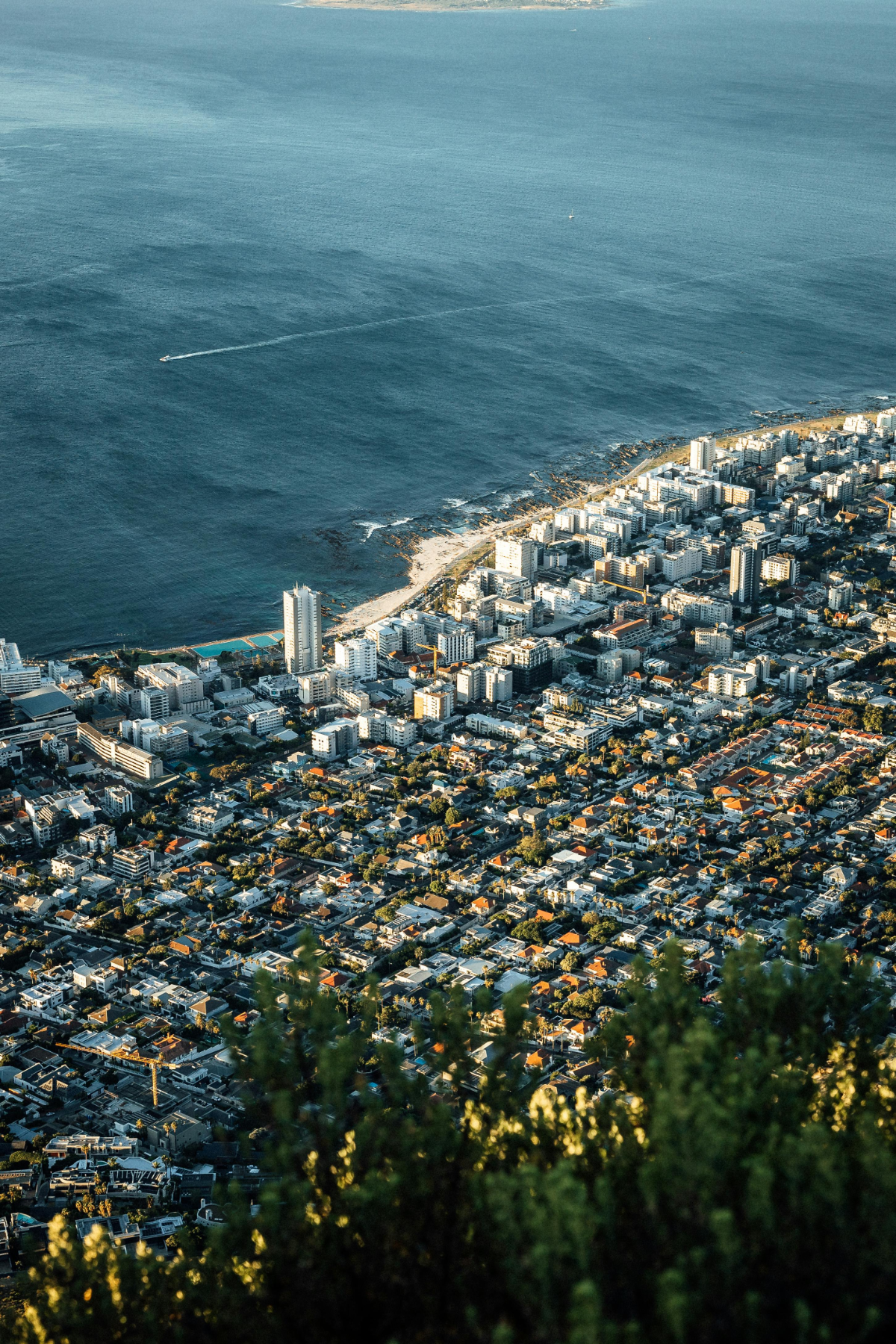Cape Winelands Slow Travel Guide: Beyond Cape Town
Last update November 2, 2025
Explore the Cape Winelands with intention, uncover sustainable vineyards, biodynamic farms, historic cellars, and curated wine experiences across Stellenbosch, Franschhoek, Constantia, and beyond.
As dawn unfurls across False Bay, Cape Town’s southern harbor glow dissolves behind granite bluffs. A chill lifts the resin of wild sage, and vine rows emerge, tight lines that read like braille across rolling slopes. The Cape Winelands behave like a living library: every row a paragraph, every vintage a fresh annotation, recognized around the world for both beauty and depth of flavor, earning a global reputation among wine lovers. Granite, sandstone, ocean-cooled wind, winter showers, midsummer heat, each edits the manuscript before handing it to the next season. From Stellenbosch’s mineral ridges to Franschhoek’s mountain amphitheater and Paarl’s sun-warmed domes, every valley tells its own story through soil, climate, and cellar craft. Seasonal cues reveal when each landscape speaks most clearly, while the practical notes that follow help you keep tempo with the land long after the last cork eases free. This guide is part of our Ultimate Guide to Cape Town, a city-to-valley journey that traces Cape Town’s broader rhythms and slower beauty.
Table of Contents
Affiliate Disclosure
Some links in this post are affiliate links. That means we may earn a small commission, at no additional cost to you, if you choose to make a purchase. These are always brands, stays, or experiences we would recommend to a dear friend. Thank you for supporting the quiet sustainability of Terra Selene.
How to Taste Cape Wine With Intention
A visit here can be more than a quick pour-and-post. Four guiding themes transform pleasant sampling into a textured exchange between traveller and terroir. Sustainability invites questions about cover crops, compost, and fair labour so every rand spent reinforces the soil and its stewards. Mindful Presence slows the pace, sunrise walks among trellises, unhurried cellar appointments, allowing subtler layers to surface. Historical Depth reminds us that barrels hold narratives spanning seventeenth-century settlement, Huguenot innovation, British trade, apartheid interruption, and democratic renewal. Artisanal Craft shines through clay amphora, gravity-fed towers, and single-parcel bottlings that treat land as collaborator rather than commodity. Let these themes guide curiosity; they filter marketing gloss from meaningful practice and turn each sip into a conversation with place.
Sustainability - Tasting The Future in The Present
Healthy soils and equitable labour conditions literally flavor the glass. Cover-crop biodiversity moderates vine stress, compost returns microbiology to depleted earth, and wetland water-recycling protects scarce aquifers; all three translate into cleaner, brighter aromatics and more transparent texture. When a farm pays fair wages and funds worker training, skills stay on the land, and vintage after vintage gains from that continuity. For the reader, choosing sustainable estates means gaining access to purer expressions of terroir and voting, sip by sip, for the valley’s long-term resilience.
Mindful Presence: Moving From Consumption to Connection
Rushing through six tasting rooms blurs flavour into a single memory of oak and alcohol. Slowing down, booking an unhurried appointment, walking vineyard rows at sunrise, or sharing a six-vintage vertical with the grower, allows physiology and psychology to sync. Heart rate steadies, palate resets, subtler layers emerge. The reward is twofold: you recall the wine months later with sensory precision, and the host senses genuine engagement, often opening library bottles or stories not offered to hurried groups. Mindful presence turns tourism into a relationship.
Historical Depth: Letting Context Season the Glass
A Constantia Muscat tasted without background might register only as sweet; tasted after learning that the same wine once travelled to Napoleon on St Helena, it gains narrative dimension, acidity reads like salty sea spray, residual sugar feels like preserved sunshine for long voyages. The Cape’s vinous history spans forced labour, migrant craftsmanship, economic booms, and boycotts; acknowledging these layers honors the people behind the flavor and guards against a sanitized, museum-style consumption of culture. Readers who ask about origin stories find that guides, farmworkers, and cellar masters respond with richer, more nuanced hospitality.
Artisanal Craft: Discovering Innovation Rooted in Place
From clay amphora buried for temperature stability to gravity-fed towers that spare juice mechanical shock, artisanal decisions reveal how creativity flourishes when technique serves terroir. Small producers often bottle single-parcel wines that show granite tension or shale breadth in pure form, expressions unavailable at an industrial scale. Seeking out these practices rewards you with flavors impossible to replicate elsewhere and funnels support directly to craft-driven growers who keep regional diversity alive. Many artisanal wineries also offer guided wine-tasting courses, providing visitors with a structured, educational experience to deepen their understanding of the winemaking craft. Alongside the guided wine tasting course, many cellars curate intimate wine-pairing experiences, cheese-and-wine pairings, or chocolate-and-wine pairings that reveal new textures and underscore how craftsmanship and place live within these wines.
Stellenbosch
Widely regarded as South Africa’s premier fine-wine region, the Stellenbosch region is a key destination for wine lovers and one of the most important wine regions in the Cape, renowned for producing some of the best wines in South Africa, including world-class Cabernet Sauvignon that showcases the area’s unique terroir and winemaking expertise. Vineyards weave around oak-lined streets where gabled Cape-Dutch homesteads, white-washed walls, thatched roofs, and ornate end-scrolls stand as living testaments to 18th-century heritage. These historic façades frame a landscape of remarkable geological contrast: decomposed granite, shale, and red Hutton soils sit within minutes of one another, offering winemakers a palette of textures and mineral signatures unmatched elsewhere in the Cape.
Scientific rigour deepens that beauty. The university’s viticulture faculty partners with growers to study everything from canopy heat mapping to carbon sequestration, while biodynamic pioneers such as Reyneke still guide draft horses between rows. Graduate students chart microbial life beneath those hooves; farmers adjust compost regimes in real time. Many estates offer a variety of wine tastings and the opportunity for a guided cellar tour, allowing visitors to experience both the educational and sensory aspects of Stellenbosch’s wine culture. The result is a culture where three-hundred-year cellar traditions evolve alongside cutting-edge sustainability, and every glass translates textbook insight into living terroir.
Waterkloof
Perched on the Schapenberg ridge just forty minutes east of Cape Town, Waterkloof’s glass-walled restaurant seems to float above False Bay. The view feels limitless, vine rows plunge toward the ocean, and the south-easter whistles straight through the terrace, explaining every lime-leaf and sea-spray note in the farm’s serpentine Sauvignon Blanc. Horses rather than tractors handle cultivation, and a gravity-fed cellar drops juice six floors without a single pump.
Book a table for the seafood-forward dégustation, line-caught hake with fennel pollen echoes the Circle of Life white blend’s quince and white-peach layers, and aim for late spring or early autumn when skies are crystalline yet crowds remain thin. A half-day private tour works best here: sunrise walk with the estate ecologist through dew-lit renosterveld, followed by an unhurried lunch and a gentle coast back to the city as afternoon winds rise.
Spier
Spier lies a straightforward forty-minute drive from Cape Town yet occupies its own tranquil pocket of Stellenbosch, where oak avenues, wetland reeds, and sculpture gardens thread between Cape-Dutch gables. Founded in 1692, the farm now filters every litre of wastewater through indigenous marshes, funds staff degrees via fair-trade surcharges, and champions local creativity. Creative Block wines echo the multi-medium art route meandering across the lawns. Choose Vadas Smokehouse & Bakery for slow-barbecued beef ribs and wood-fired sourdough, or order a picnic hamper and sprawl beside the Eerste River.
September’s crisp mornings suit long art walks, while summer sunsets (December–January) bathe the lawns in bronze light perfect for late rosé. Spier fits easily into a full-day, self-drive loop, though an e-bike or small-group eco-tour frees you from parking and lets you sample Creative Block red and white blends without hesitation.
Jordan
At the far end of Stellenbosch Kloof Road, about forty-five minutes from Cape Town, Jordan’s natural amphitheater curves around a dam, each slope facing a different point on the compass. Dawn slants across cool south-east Chardonnay rows while afternoon sunshine ripens Syrah on warmer western benches, a contrast you taste clearly in flights poured inside the stone-clad tasting room. Reserve a window table at The Jordan Restaurant for slow lunches of free-range duck with farm citrus or, on cooler days, roast pork belly with pomegranate glaze, dishes that harmonise with the Nine Yards Chardonnay’s grilled-pineapple richness.
Harvest visits in early April offer wine cellar bustle and fresh ferment samples; October delivers green vineyards and russet oak groves perfect for terrace picnics from The Bakery at Jordan. A private driver or curated full-day Stellenbosch tour lets you linger through a vertical Chardonnay tasting, a cellar walk, and a late-afternoon dam stroll without watching the clock.
Franschhoek
Long celebrated for artisan food and Cap Classique, Franschhoek, meaning “French corner”, unfolds beneath granite ridgelines that climb steeply above lavender verges and vine-terraced slopes. Renowned for its Franschhoek wine, especially French-inspired varietals, the region’s reputation is built on both its exceptional wines and its rich heritage. Huguenot refugees settled in the valley in the late 1600s, and their influence still whispers through gabled cottages and white-washed cellars dating back to that first wave of French architecture.
Steep amphitheatres funnel cool night air across the vines, slowing ripening and locking in brisk acidity. The valley’s visual harmony, often cited among the most beautiful places in South Africa, sets both palate and pace: Leeu balances sculpture with Syrah, Babylonstoren pairs amphora-raised Chenin with just-picked vegetables, and Haute Cabrière teaches sabrage by candlelight in limestone calm. Culinary culture completes the picture. Cheese–wine pairings unfold in barn-loft lofts, bean-to-bar chocolate flights echo Pinot’s berry notes, and lunches stretch unhurried across winery terraces and fine-dining rooms alike. Here, beauty is not décor but an ingredient, woven so naturally into farming, food, and service that travellers slow of their own accord, tasting attentively until the valley’s quiet rhythm anchors every sip.
Leeu Estates
Perched on the lower slopes of the Dassenberg mountains, about an hour’s drive (70 km) from Cape Town, Leeu Estates feels more retreat than tasting room: reflecting ponds mirror dramatic peaks, bronze big-cat sculptures prowl manicured fynbos, and terraces look straight onto tight Syrah rows. Start with the estate’s short, guided meditative walk (or a breath-work class at dawn) to let valley stillness settle before the first pour of Syrah, layered with violet, black olive, and a graphite edge born of granite soils. The Dining Room serves pared-back, flavour-first plates, springbok carpaccio in winter, garden-picked courgette blossoms in spring, that echo the wine’s savoury spectrum; reserve a table for an unhurried lunch rather than rushing on.
Spring and early autumn give the clearest mountain views and the gentlest temperatures; a private driver or full-day tour works best, so you’re free to linger among the art galleries and native-plant labyrinth without watching the clock.
Babylonstoren
Thirty minutes farther west on the R45, Babylonstoren spreads out like a geometric tapestry of orchards, water canals, and eight hectares of heritage vegetable beds. Visitors receive secateurs at the gate, taste pineapple sage or quince seconds off the plant, before settling in for a skin-contact, clay-amphora Chenin that shows pear skin, lanolin, and dusty stone. Babel, the on-site greenhouse restaurant, turns those garden pickings into dishes such as beetroot carpaccio with fennel pollen or butternut baked in embers and plated with rooftop honey; lunch is essential, not optional.
The estate is a photographer’s dream from late August through October, when peach orchards flower and the garden’s spring section erupts in colour. Plan a half-day stop within a broader Stellenbosch–Franschhoek route, or book a private tour focused entirely on “farm-to-fork and amphora” to justify an unhurried afternoon roaming the espalier tunnels and olive press.
Haute Cabrière
Cut deep into the Franschhoek Pass just ten minutes outside the village (and 80 minutes from Cape Town), Haute Cabrière’s limestone cellar glows with candlelight even at noon. Sabrage demonstrations run three times daily, late-afternoon slots coincide with golden light spilling through the arched entrance, and the Cap Classique pops with green-apple zest and warm brioche. The terrace restaurant serves contemporary winelands fare; order the line-caught fish with garden herbs if you stay for dinner, or the pâte en croûte with mushroom jus at lunch.
Late spring and high summer deliver an unforgettable scenery of long, pink sunsets over the amphitheatre; an early-evening reservation lets you watch vineyard slopes turn mauve as you savor a final flute. Because the wine estate sits higher up the pass, a local driver or small-group tour simplifies those winding corners and leaves both hands free for sabre practice.
La Motte
Located on the valley floor only 3 km from Franschhoek village, La Motte winery is an easy one-hour hop from Cape Town yet feels cocooned by sandstone walls that hush road noise to a whisper. A gravity-flow winery works below a barn that houses Pierneef sketches and rotating contemporary shows; upstairs, Pierneef à La Motte restaurant delivers regionally rooted plates, think Karoo lamb with fynbos ash in winter, or spring greens with wild-garlic emulsion. The Syrah-Viognier blend, co-fermented for gentle perfume, lifts jasmine and white-pepper notes above satin tannins, mirroring the calm light that fills the gallery.
Visit in autumn harvest (March–April) for bustling cellar energy or in September when wild irises fringe the estate walkway; Friday-morning winelands markets pop up then too. Most travelers fold La Motte into a half-day itinerary, perhaps paired with one neighboring estate, but art lovers often stay longer, making a private guide or flexible driver the sensible choice.
Constantia
Constantia, officially South Africa’s oldest wine region and part of the famous Cape Winelands, rises on the southern, cool, south-facing slopes only a few kilometres from the Atlantic. Afternoon breezes off False Bay sweep through the amphitheatre, locking acidity into Sauvignon Blanc, Sémillon, and Muscat even at the height of summer; the resulting wines carry lime, kelp salt, and, especially in Vin de Constance, layers of rooibos-honeyed dried apricot.
The valley’s deeper magnetism is narrative continuity. Vineyards planted under Governor Simon van der Stel in 1685 still bear fruit every harvest, their cellars darkened by three centuries of steam and ferment. Modern custodians respect that lineage while pushing it forward: Klein Constantia revived the fabled sweet wine once favoured by Napoleon, and Buitenverwachting now trials regenerative mulches, cover-crop mosaics, and biochar. Tasting here means feeling land and labour converse across time, sensory immediacy held in tandem with oak beams seasoned by history.
Groot Constantia
Only twenty minutes from Cape Town’s CBD, Groot Constantia feels centuries removed once you turn onto its oak-lined avenue. White-washed, gabled homesteads guard quiet courtyards where oaks murmur and swallows trace lazy loops, a postcard of 17th-century Cape-Dutch architecture still in working order. After a guided cellar walk that ends beside the ledgers recording shipments to Napoleon, settle under the vines at Jonkershuis for a Cape-Malay lunch of bobotie or slow-braised lamb: the spiced richness flatters the estate’s Gouverneurs Reserve Cabernet-Merlot, a wine that threads blackcurrant and cedar through a cool Atlantic lift.
Autumn harvest (late March) adds bustle without summer crowds, and a half-day visit or guided Constantia circuit leaves ample time for the manor-house museum and a stroll beneath 300-year-old oaks before city traffic picks up.
Klein Constantia
Five minutes farther up the valley, a winding route climbs to Klein Constantia, South Africa’s oldest commercial vineyard and the birthplace of Vine de Constance. From the terrace, you see False Bay glittering beyond pines; the same coastal draft brushes your face and keeps the amber Muscat agile, its candied-orange and rooibos-honey richness checked by saline clarity. A late-afternoon tasting shows the wine at its aromatic peak, then segues into tapas at The Bistro, think smoked trout with preserved lemon or farm-garden salad with fynbos vinaigrette.
Spring’s crisp air (September) sharpens the sea views, while winter’s quiet lets you book a vertical flight that includes rare library vintages. A private driver or small-group tour is wise; the estate’s steep driveway and generous pours make self-driving a compromise you won’t miss.
Buitenverwachting
Buitenverwachting (“Beyond Expectation”) sits on gently rolling lawns shaded by ancient pines, barely half an hour from Cape Town yet buffered from suburbia by a ring of vineyards and fynbos. Inside the 18th-century winery, biochar kilns and compost stacks hum with modern life, but it’s outdoors, under dappled light, that the estate shows best. Order a summer picnic hamper, artisanal cheeses, biltong, roasted aubergine, fresh figs, and pair it with Buiten Blanc, a Sauvignon-Sémillon blend that sparkles with elderflower, fig, and wet-stone tension.
In cooler months, the fine-dining restaurant turns to slow-braised Karoo lamb and pours the 1769 dessert wine, golden with sultana and dried-peach depth yet lifted by citrus edge. A relaxed midday stop folds easily into a half-day Constantia loop, guided by a tour or self-paced, giving you time to wander the herb garden or watch ducks patrol the dam.
Steenberg
Steenberg, the peninsula’s oldest registered farm (1682), lies just twenty kilometers from the city yet feels cocooned by granite foothills and wild fynbos corridors. Sauvignon Blanc from these mineral soils flashes lime, jalapeño, and flint, an ideal aperitif before a late breakfast of soft-poached eggs and farm bacon at Bistro Sixteen82, or an unhurried lunch of West Coast mussels and herb salad at Tryn. Afterward, a tasting flight in the glass-walled lounge frames vineyard vistas with distant skyline glints, and spa treatments that use grape-seed oils remind you flavor can refresh body as surely as palate.
Late spring (October) catches vines in bright new leaf and the restaurant gardens in full bloom; sunset tastings in high summer bathe the valley in rose-gold light. Steenberg anchors either end of a Constantia itinerary; start your day here for breakfast and bubbles, or finish with tapas and evening Sauvignon, leaving the middle hours for neighboring estates.
Hidden Gems and Artisanal Craft
PAARL
Forty-five minutes inland from Cape Town, Paarl’s massive granite outcrops absorb daytime warmth and breathe it back after dusk, creating a slow, even ripening curve that shapes generous, structured reds. As South Africa’s second-largest wine region, it holds space for grand Cape-Dutch manors and progressive biodynamic farms alike. Avondale sits on the valley’s shoulder, its driveway flanked by fynbos corridors alive with bees and ladybirds. Here, runner-duck patrols replace pesticides, clay qvevri nestle underground for Rhône-style ferments, and compost teas bubble quietly beside the barrel hall. The flagship La Luna blend spills blackberry, violet, and gentle spice across a supple, soil-driven frame, best appreciated over the estate’s long, farmhouse lunch platters of charcuterie, garden leaves, and wood-fired bread.
Late April, when harvest dust has settled but days remain warm, is ideal; book a private driver or slot Avondale into a full-day Paarl shuttle so you can linger on the cellar’s shaded stoep without clock-watching.
Elgin
Just over an hour south-east of Cape Town, the Elgin plateau rises above apple orchards and curls into a near-permanent cloak of coastal fog, slowing ripening and preserving razor-sharp acidity.
Paul Cluver, family-run since the late nineteenth century, anchors the valley with a sweeping portfolio, from steely Riesling to sculpted Chardonnay, yet its Seven Flags Pinot is the local benchmark. Wine tastings take place in a cedar-scented courtyard beside a forest amphitheater where woodwind rehearsals drift into the glass, amplifying notes of cranberry, wild strawberry and pine-needle floor.
Drive ten minutes along a ridge and you reach Iona Winery, founded in 1997 on an abandoned apple farm more than 400 metres up. The view, orchards, distant Atlantic, rolling fynbos, is as clear as the wines: lime-leaf Sauvignon and slate-lined Chardonnay that feel carved from cool air.
A few folds of hill farther on, Almenkerk offers balcony vistas of mist unspooling across vines; its shale-etched Chardonnay, pepper-toned Syrah, and sleek Bordeaux blend finish with the mineral snap that altitude delivers.
Spring (September-October) fills orchards with blossom and keeps cellar temperatures brisk; a small-group tour that focuses on “cool-climate gems” lets you pause for a fireside lunch at Paul Cluver’s salt-baked pork belly or picnic among Iona’s stone pines without the stress of mountain driving.
Seasonality and Signature Itineraries
The Cape Winelands follow a four-part rhythm, and each phase alters both vineyard energy and visitor logistics. Harvest (late February – April) feels electric: cellar doors swing open as early as 07:00 AM, presses hiss until 6:00 PM, and the warm air smells of grape skins and spontaneous ferment. Build at least a 30-minute buffer between estates; slow-moving fruit trucks and ad-hoc pump-overs often delay appointments. Winter (June – August) quiets the pace. Fog clings to valleys, barrel halls glow with log fires, and many tasting rooms close by 4:00 PM; a same-morning call usually secures a cosy fireside flight. Spring (September – November) brings saffron-bright canola and first bud break; whites sharpen into lime and lemongrass, and wildflowers edge vineyard roads. Summer (December – January) stretches daylight toward lawn concerts and twilight rosé; the heat invites early-morning tastings followed by shaded lunches that linger into cooler evenings.
Each season stages a distinct adventure, harvest hums with kinetic energy, winter invites fireside tastings, so whenever you visit, the experience feels singular and fully immersive.
Choosing your window well adds depth to each glass, frenetic harvest buzz, contemplative winter hush, spring clarity, or summer’s lingering glow, without battling mismatched expectations. For those seeking a seamless experience, booking a day wine tour, full day wine tour, or day tour is an excellent way to explore the region’s highlights in a single, well-organized trip. Rates for most tours are quoted per person, and choosing between a day tour, a full day wine tour, or a bespoke wine tour lets you balance budget with curiosity while still capturing the region’s highlights in one seamless trip. Many travellers begin with a Stellenbosch wine tour, a route that threads together cellar tours, relaxed wine and cheese tastings, and sweeping drives through the Cape Winelands.
For guests who would rather hand navigation, and booking logistics for wine tours, to a specialist, Cape Wine & Leisure Tours curates both exclusive private itineraries and convivial small-group days out of Cape Town. Each schedule is fully customizable: clients indicate the valleys, grape varieties, or farming philosophies that interest them most, and the tour guide proposes a route that matches pace, palate, and seasonal availability. A traveller curious about biodynamics might move from Reyneke to Avondale, while an architecture enthusiast could pair Groot Constantia’s 1685 gables with Stellenbosch’s Dutch-inspired homesteads. Tour guides stay in conversation with weather and traffic reports, rerouting around a sudden south-easter on Sir Lowry’s Pass or a harvest convoy on Helshoogte so that the day flows instead of stalls. By outsourcing the logistical puzzle, reservation times, driving, and alcohol limits, visitors remain free to focus on flavor and story at every stop.
Practical Guide: Visiting With Intention
TRANSPORT
Navigating the Cape Winelands route begins with a few ground truths. South Africa drives on the left, and the legal blood-alcohol limit sits at 0.05 %, so planning around designated drivers or professional transport is essential, especially along the R44, N2, and Baden-Powell, where evening roadblocks are common. Electric ride-share cars such as Uber Green and Bolt Electric make the forty-minute hop from Cape Town to Stellenbosch or Constantia with far less carbon impact than standard taxis, provided you confirm vehicle availability the evening before.
In Franschhoek, a solar-assisted Wine Tram runs five color-coded routes, each looping past six to eight estates and publishing timetables a week in advance on its app. Small electric shuttles operated by Scoot Drifters, Wine Flies Eco-Flee,t and Cape Compost Coaches knit Stellenbosch, Paarl, and Franschhoek together on ninety-minute harvest rotations (and every three hours outside peak season). Travelers who prefer to feel the landscape at bicycle speed can hire e-bikes from Blaauwklippen Cycles or Franschhoek Pedal, both of which supply chilled panniers for two bottles and maintain charging stations at Babylonstoren, Jordan, Avondal,e and Paul Cluver.
Scheduling and Reservations
Once the seasonal cadence is clear, booking becomes a dialogue rather than a chore. Harvest’s popularity means premium tastings can disappear four to six weeks in advance, so early confirmation keeps the day cohesive; spring and summer also fill quickly for marquee estates with long lawn lunches. Winter, by contrast, rewards spontaneity: many cellars welcome same-day inquiries, provided you arrive before dusk. Walk-in limits sit at six guests in most tasting rooms; parties of eight or more should pre-pay flights, allowing smaller venues to plan glassware and pacing. Experiences beyond standard pours, Leeu’s sunrise yoga deck, Waterkloof’s vine-top hike, Haute Cabrière’s candle-lit sabrage, release calendars roughly three months out and vanish swiftly once newsletter subscribers get the alert. Treat the booking email or call as your first sip; the courtesy and curiosity you show at this stage often open doors to library vintages or behind-the-scenes barrel samples once you arrive.
Savor, Support, Sustain
Cape wine is sunlight bottled through granite and sea wind, yet it is also people, compost, heritage and risk. A mindful journey across these valleys listens for each layer: the ecology under cover crops, the stillness between yoga breaths above a pond, the archival ink tracing barrels bound for Napoleon, and the reed-thin whistle of wind threading Pinot leaves at dusk. To taste with this attention is to join the Winelands’ long conversation rather than simply touring its picture frames.
Carry wine bottles home, but also carry a slowed heartbeat, a sharper sense for living soil, and an eagerness to ask careful questions wherever you meet agriculture. Each mindful purchase, each moment of presence, echoes back through the vine rows and forward into harvests still on the horizon. When the cork next eases from a Cape bottle, pause to let the valley’s memory settle in the glass; raise it in gratitude for landscapes cared-for and stories shared, one intentional sip at a time.
To anchor this journey within the wider landscape, return to our Ultimate Guide to Cape Town, a companion piece to help you land, wander, and linger across the Western Cape.

